- Joined
- May 3, 2001
- Messages
- 7,516
In my conversations with Paul Slegers about why this stone received "only" an excellent grade instead of ideal from AGS I received this comment from Paul.
This is the first one of his new Princess cuts that I have received and it is the most beautiful princess that I have ever seen. He said that when he did the "Pepsi" test on them that a large percentage of people preferred the AGS 1''s and another large percentage preferred the AGS 0''s.
Since the system will not be officially in place until May 1, I don''t have the final cert, but Paul has been informed as to what the grade will be. This stone is Excellent in light performance, and ideal in polish, proportions, and symmetry for an AGS 1 grade.
Here is his reply.
Quote:
Wink,
As far as I am concerned, this is "already" Excellent. If you look at
the data of AGS, the top-3% of princesses are Ideal, and the next 4% (so
the top-7%) are Excellent.
And many people, professionals, have never ever seen a Princess cut as
nicely like this one.
It is definitely a weird thing to talk about "only" Excellent. Certainly
if you think that in the future AGS-system for rounds, many of the
current super-ideals will "only" be Excellent. And I am not even talking
about the wannabe-super-ideals, that someone like xxx is selling.
The problem is that people are taking ''set ideas'' from rounds, to use
them on fancy shapes. Because of this, a pattern of leakage is
considered bad, while it adds to the contrast, in the absence of
obstruction.
Garry Holloway once explained to me that on a princess, one should look
at the idealscope without background lighting, so on a black surface. In
this way, the total contrast pattern becomes more apparent. Maybe, you
can try to picture this, and then start a true discussion.
End Quote
I took the picture. Here it is, and I welcome opinions from any and all, but especially from Gary, and John Quixote as I wish to learn from them what they think. I will post both the black field and the regular photo of the diamond so that you can see a little of its appearance.
Wink
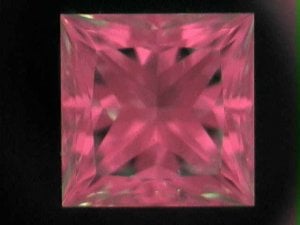
This is the first one of his new Princess cuts that I have received and it is the most beautiful princess that I have ever seen. He said that when he did the "Pepsi" test on them that a large percentage of people preferred the AGS 1''s and another large percentage preferred the AGS 0''s.
Since the system will not be officially in place until May 1, I don''t have the final cert, but Paul has been informed as to what the grade will be. This stone is Excellent in light performance, and ideal in polish, proportions, and symmetry for an AGS 1 grade.
Here is his reply.
Quote:
Wink,
As far as I am concerned, this is "already" Excellent. If you look at
the data of AGS, the top-3% of princesses are Ideal, and the next 4% (so
the top-7%) are Excellent.
And many people, professionals, have never ever seen a Princess cut as
nicely like this one.
It is definitely a weird thing to talk about "only" Excellent. Certainly
if you think that in the future AGS-system for rounds, many of the
current super-ideals will "only" be Excellent. And I am not even talking
about the wannabe-super-ideals, that someone like xxx is selling.
The problem is that people are taking ''set ideas'' from rounds, to use
them on fancy shapes. Because of this, a pattern of leakage is
considered bad, while it adds to the contrast, in the absence of
obstruction.
Garry Holloway once explained to me that on a princess, one should look
at the idealscope without background lighting, so on a black surface. In
this way, the total contrast pattern becomes more apparent. Maybe, you
can try to picture this, and then start a true discussion.
End Quote
I took the picture. Here it is, and I welcome opinions from any and all, but especially from Gary, and John Quixote as I wish to learn from them what they think. I will post both the black field and the regular photo of the diamond so that you can see a little of its appearance.
Wink



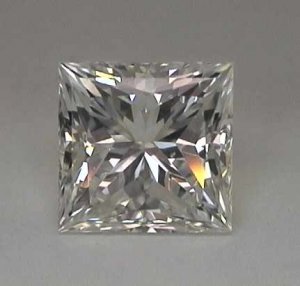



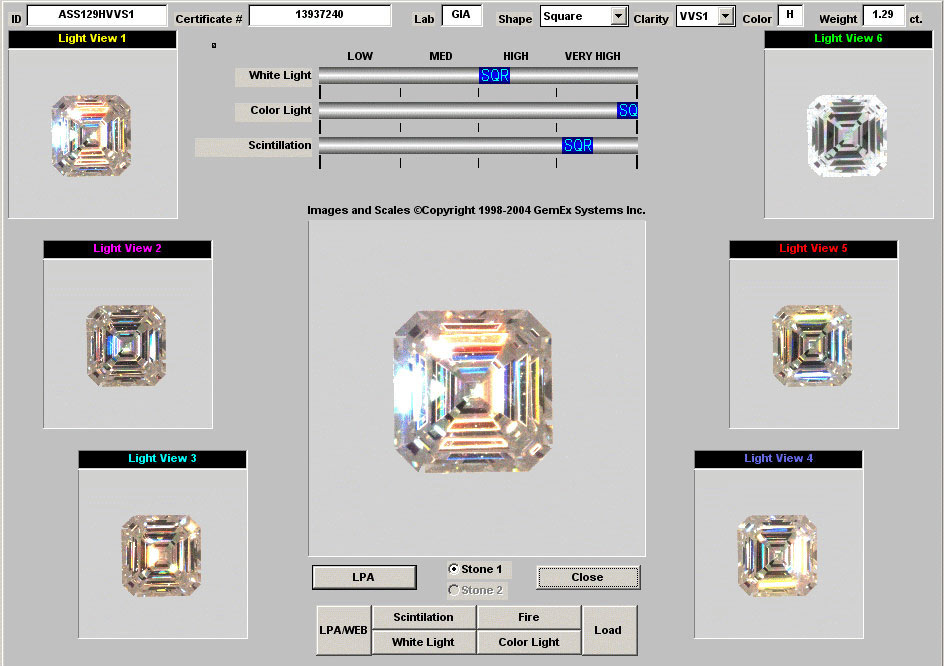
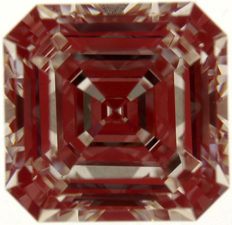


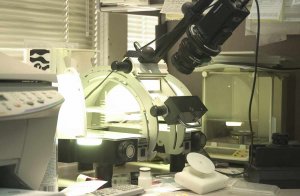
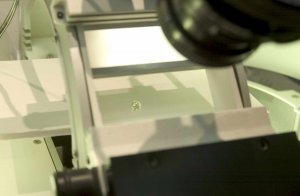
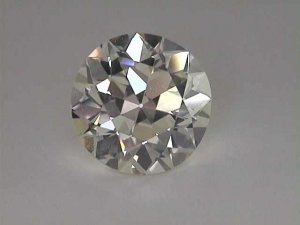
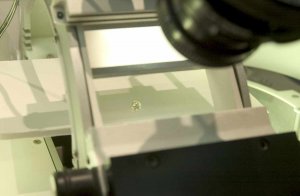


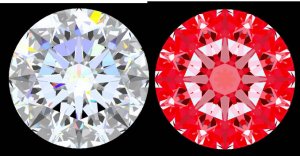


300x240.png)